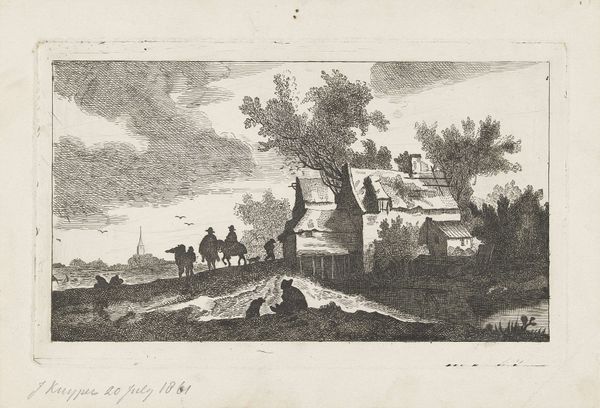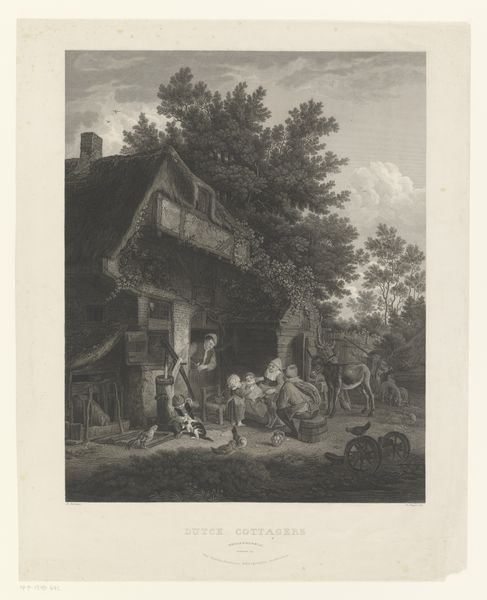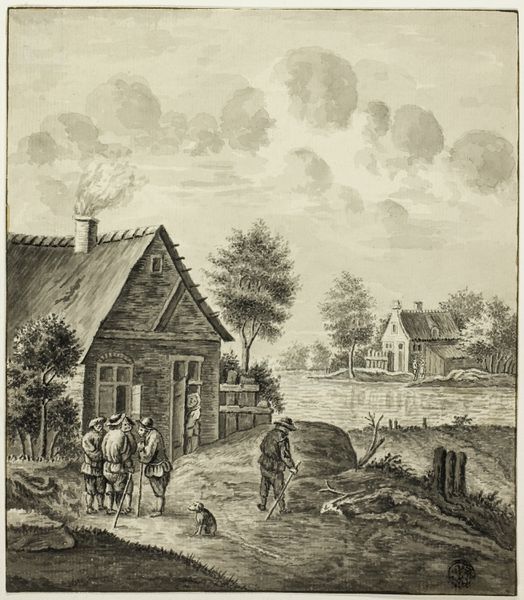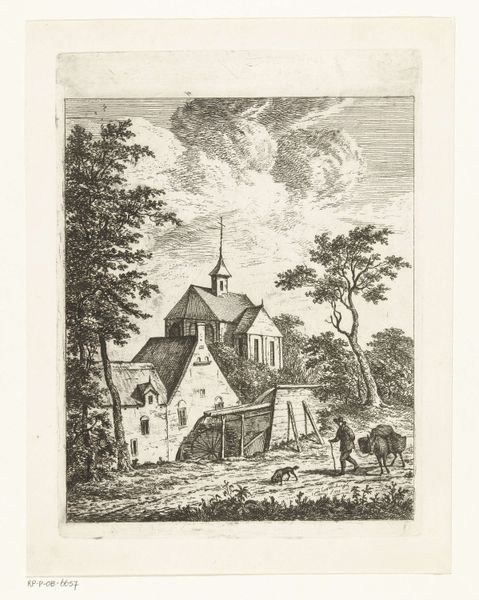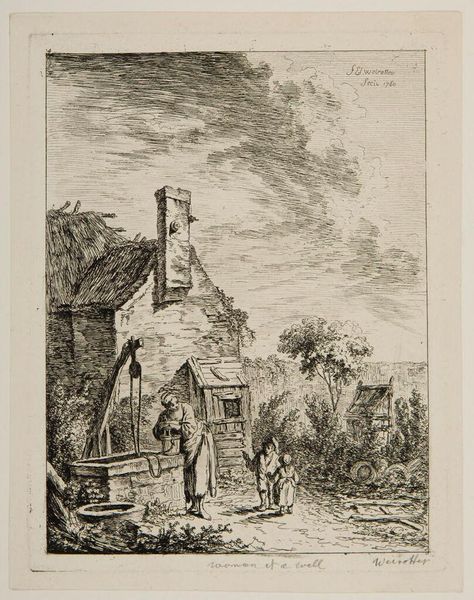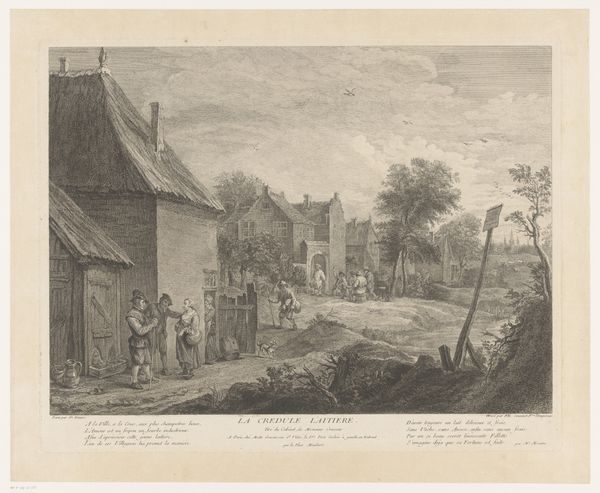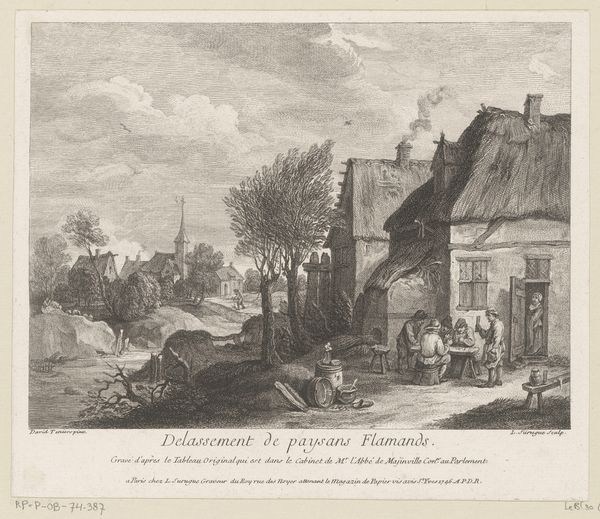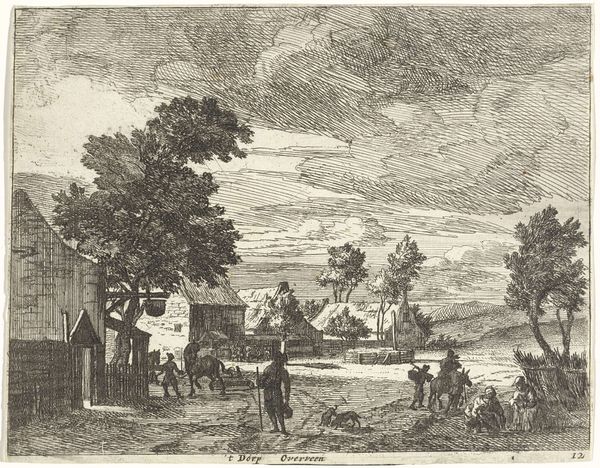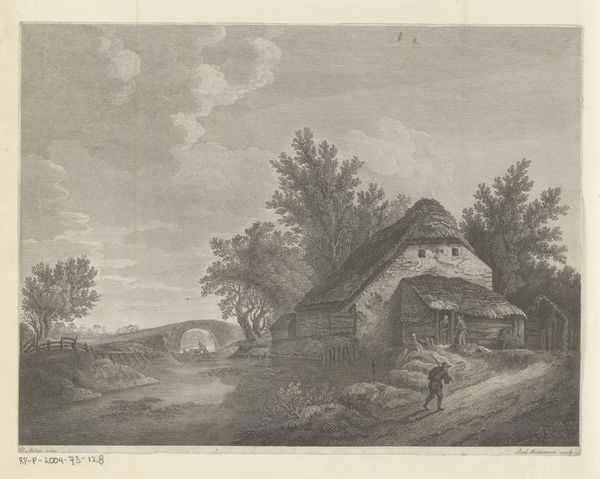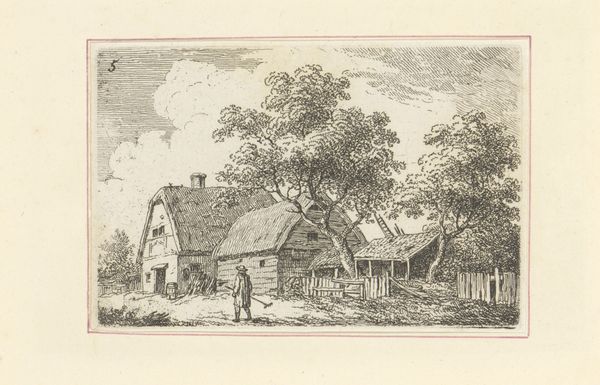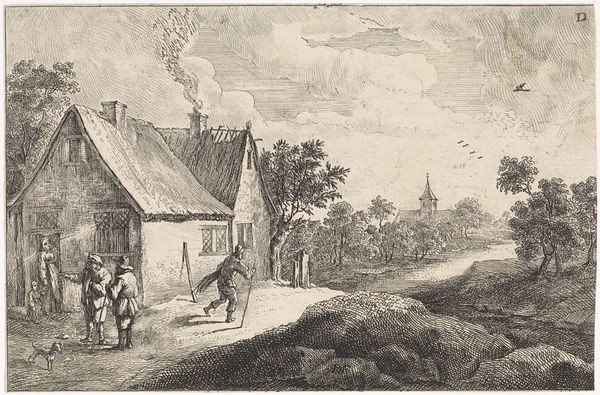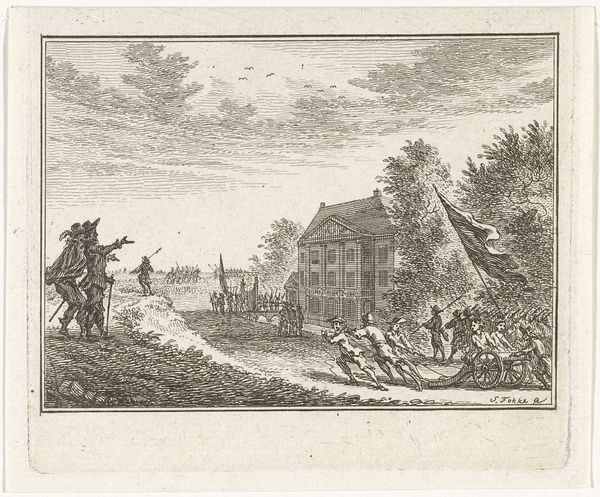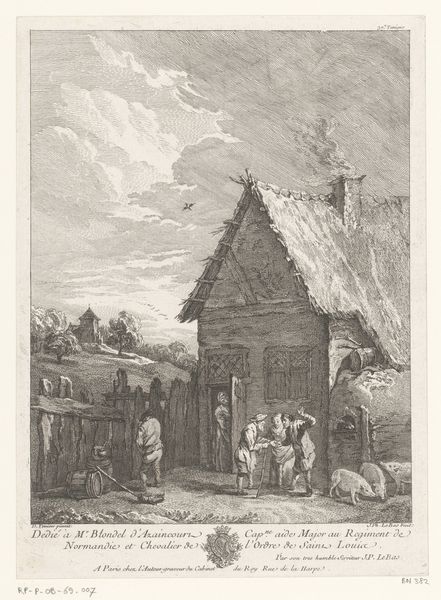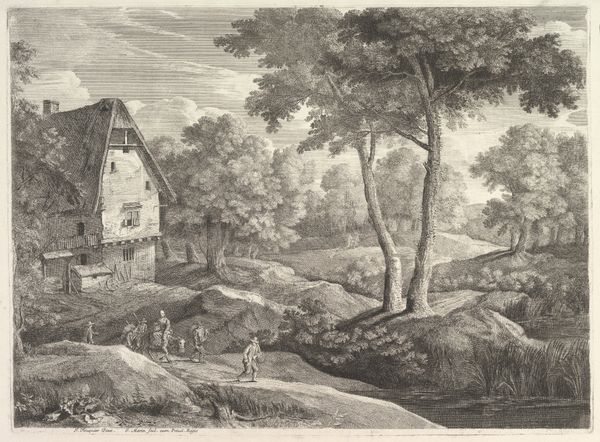
print, etching, engraving
#
baroque
# print
#
etching
#
old engraving style
#
landscape
#
genre-painting
#
engraving
Dimensions: height 238 mm, width 174 mm
Copyright: Rijks Museum: Open Domain
Editor: Here we have "Two Farmhouses with Various Figures," a print – an engraving and etching – made by Jacques Philippe Le Bas, sometime between 1717 and 1783. It feels quite… documentary. Almost like a snapshot, yet so meticulously rendered. I'm struck by the emphasis on labor - on the everyday lives of these rural people. What jumps out at you? Curator: My focus immediately shifts to the *how*. Look at the etched lines that build up the thatched roofs, and the ways they create such tangible texture! Le Bas wasn't just representing; he was *building* this world layer by layer, mimicking the actual labor involved in constructing these homes. And consider the social context. Editor: The dedication at the bottom to Charles Renard Berch, who I understand was the Secretary of the King of Sweden. I’m intrigued why Le Bas dedicated this work to him, and the impact that Berch might have had on art at this time. Curator: Exactly! It’s not simply about patronage, it is also about consumption: The plate had a purpose, the print had an intended destination as well as being functional as the ‘petit Laitiere’. It was produced to reach someone in a material exchange, making something available that only could be consumed through financial reach. Look at how the print itself embodies the material and economic realities of its time? Each etched line a small act of production, reflecting a broader system of patronage, labour, and consumption. Is there a way in which you think the print *subverts* traditional expectations within those established boundaries? Editor: Well, by focusing on such an ordinary scene, maybe? Rather than a grand historical narrative, we get this intimate glimpse into the lives of peasants. Perhaps that choice of subject is itself a statement about what is considered worthy of artistic representation? Curator: Precisely! The choice of "genre painting" elevated the everyday to the realm of art, prompting us to think about the values we place on different kinds of labour. Editor: It’s interesting to consider how the *making* of the artwork, with all the work needed, reflects and even comments on the scene represented within it. Thanks.
Comments
No comments
Be the first to comment and join the conversation on the ultimate creative platform.
